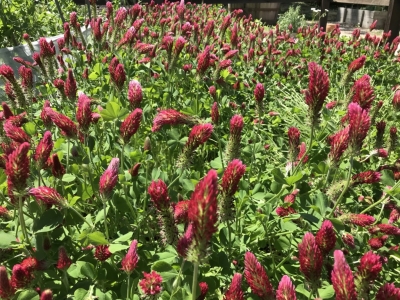COMPOST, LOOKING AHEAD, LOOKING BACK
Spring Readiness
I’m frantically getting ready for spring. A large portion of that readying means making compost. Compost piles assembled now, while temperatures are still relatively warm, have plenty of time to heat up right to their edges, quickly cooking and killing most resident weed seeds, pests, and diseases.
 I like to think of my compost pile as a pet (really, many pets, the population of which changes over time as the compost ripens) that needs, as do our ducks, dogs and cat, food, water, and air. Today I’ll feeding my pet — my compost pet — corn stalks, lettuce plants that have gone to seed, rotten tomatoes and peppers, and other garden refuse. Plenty of organic materials are available to feed compost piles this time of year.
I like to think of my compost pile as a pet (really, many pets, the population of which changes over time as the compost ripens) that needs, as do our ducks, dogs and cat, food, water, and air. Today I’ll feeding my pet — my compost pet — corn stalks, lettuce plants that have gone to seed, rotten tomatoes and peppers, and other garden refuse. Plenty of organic materials are available to feed compost piles this time of year.
In case you’re wondering, no, I’m not taking a close look at each leaf, stalk, and fruit to make sure it’s free of pests before getting tossed on the growing pile, as is suggested by some people. Look closely enough, and you’d find that just about everything would have some hostile organism on it. But given some combination of time and heat, a well-fed compost pile will take care of such potential problems.
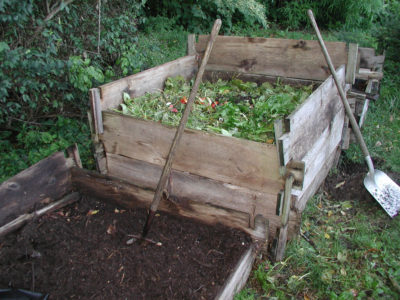 Joseph Jenkins, in his excellent (and fun-to-read) book, The Humanure Handbook, quotes research showing complete destruction of human pathogens in humanure composts that reach 145°F for one hour, 122°F for one day, or 109° F for one week. The same should be true for plant pathogens and pests. For decades, I’ve tossed everything and anything into my compost piles and never noticed any carry over of pest or disease problems.
Joseph Jenkins, in his excellent (and fun-to-read) book, The Humanure Handbook, quotes research showing complete destruction of human pathogens in humanure composts that reach 145°F for one hour, 122°F for one day, or 109° F for one week. The same should be true for plant pathogens and pests. For decades, I’ve tossed everything and anything into my compost piles and never noticed any carry over of pest or disease problems.
Heat and time also do in weed seeds. Survival depends on the kind of weed: Research shows that a couple of weeks at 114°F kills pigweed seeds, while only about a week at that temperature kills seeds of tomatoes, peppers and their other kin in the nightshade family. Generally temperatures of 131°F for a couple of weeks kills most weed seeds.
Heat and time aren’t the only threats faced by pathogens, pests, and weed seeds in the innards of my compost piles. In addition to heat, various antagonistic organisms — including friendly (to us) bacteria, fungi, and nematodes — stand ready to inhibit their growth or gobble them up.
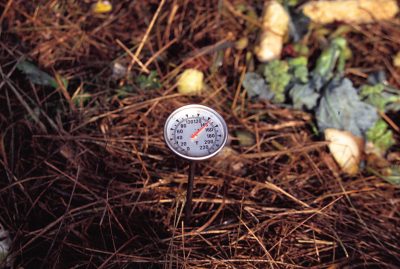 This time of year, my compost piles dial the heat up to around 140°F, and hold that temperature for a couple of weeks, or more, before slowly cooling down.
This time of year, my compost piles dial the heat up to around 140°F, and hold that temperature for a couple of weeks, or more, before slowly cooling down.
Weedy Revenge
Speaking of weeds, they also make excellent food for my compost pet. What sweet revenge I get tossing mugwort, creeping Charlie, and woodsorrel onto a growing compost pile and then get them back transmuted as dark, rich compost.
Other organic materials that go into my compost piles are a mix of goldenrod, bee balm, grasses, yarrow, and whatever else is growing in my south field. I cut parts of it with a scythe, let the scythings wilt for a day, then rake and pitchfork them up.
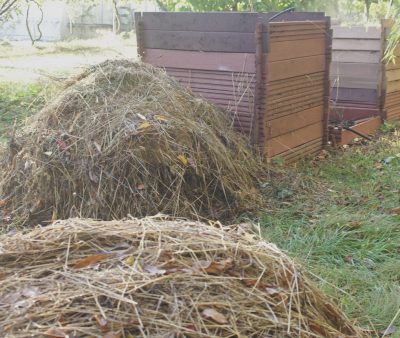 Also on the menu is some horse manure from a nearby stable, which I like mostly for the wood shavings that provide bedding for the horses. The manure itself furnishes nitrogen, which compost pets need for a balanced diet — 20 parts carbon to 1 part nitrogen but no need to be overly exacting because it all balances out in the finished compost. Lacking manure, soybean meal is another nitrogen-rich feed, as are grass clippings and kitchen waste.
Also on the menu is some horse manure from a nearby stable, which I like mostly for the wood shavings that provide bedding for the horses. The manure itself furnishes nitrogen, which compost pets need for a balanced diet — 20 parts carbon to 1 part nitrogen but no need to be overly exacting because it all balances out in the finished compost. Lacking manure, soybean meal is another nitrogen-rich feed, as are grass clippings and kitchen waste.
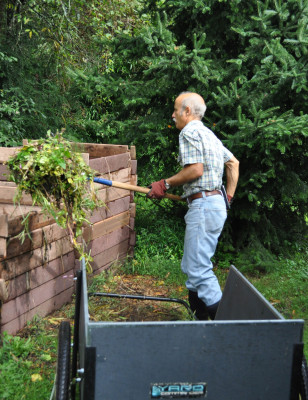 Feeding a variety of compost foods provides a smorgasbord of macro- and micronutrients to the composting organisms and, hence, to my plants. Every few inches I also sprinkle on some soil, to help absorb nutrients and odors, and some ground limestone, to lower acidity of our naturally increasingly acidic soils, and to improve the texture of the finished compost.
Feeding a variety of compost foods provides a smorgasbord of macro- and micronutrients to the composting organisms and, hence, to my plants. Every few inches I also sprinkle on some soil, to help absorb nutrients and odors, and some ground limestone, to lower acidity of our naturally increasingly acidic soils, and to improve the texture of the finished compost.
The Annual Cycle of Compost Here
Compost made this time of year typically gets turned next spring, then, later in the growing season, pitchforked into the garden cart for spreading on vegetable beds.

A one-inch depth of ripened compost supplies all that bed needs to grow intensively planted vegetables there for the whole growing season. It was too late to plant a late vegetable crop in the bed I just cleared of old corn stalks, so I blanketed that bed an inch deep in compost. The same goes for a bed in which grew an early planting of zucchini.
It was too late to plant a late vegetable crop in the bed I just cleared of old corn stalks, so I blanketed that bed an inch deep in compost. The same goes for a bed in which grew an early planting of zucchini.
Any beds that get cleared before the end of this month will get, before I lay down that blanket of compost, a dense sprinkling of oat seeds. The seeds will germinate and the seedlings will thrive in the cool weather of autumn and early winter.
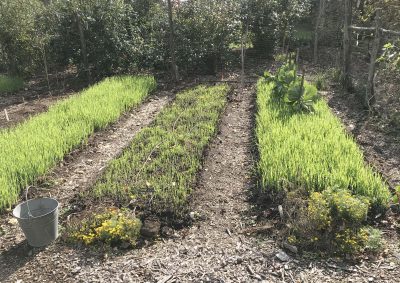
This “cover crop,” as it is called, protects the soil surface from pounding rain and insulates the lower layers. The oat roots latch onto nutrients that might otherwise wash down through the soil. And as the roots grow, they nudge soil particles this way and that, giving the ground a nice, crumbly structure that garden plants like so well.
Beds cleared after October 1st get only compost, no oats, which is almost as good. In all honesty, I’ve never noted any difference in the soil or in vegetable plant growth from using compost alone as opposed to compost plus a cover crop. That much compost, year after year, probably way overshadows the effect of a cover crop. The green cover does look nice going into winter, though.
(I deal more in-depth with composting, using compost, and cover crops in my book Weedless Gardening.)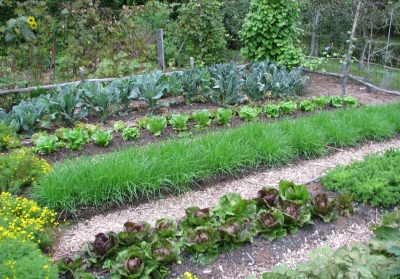

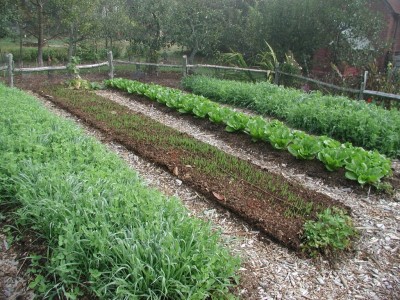 All this prompted one reader, Peter, to comment with some specific questions that might also be of interest to some of you. I will now try to answer them.
All this prompted one reader, Peter, to comment with some specific questions that might also be of interest to some of you. I will now try to answer them.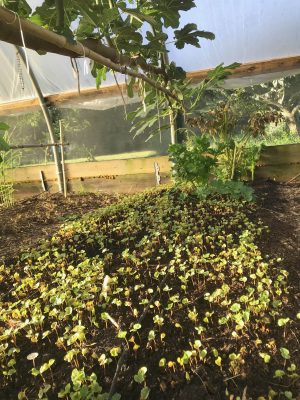
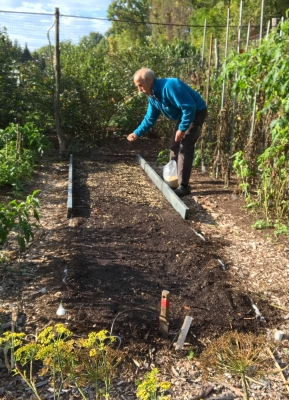
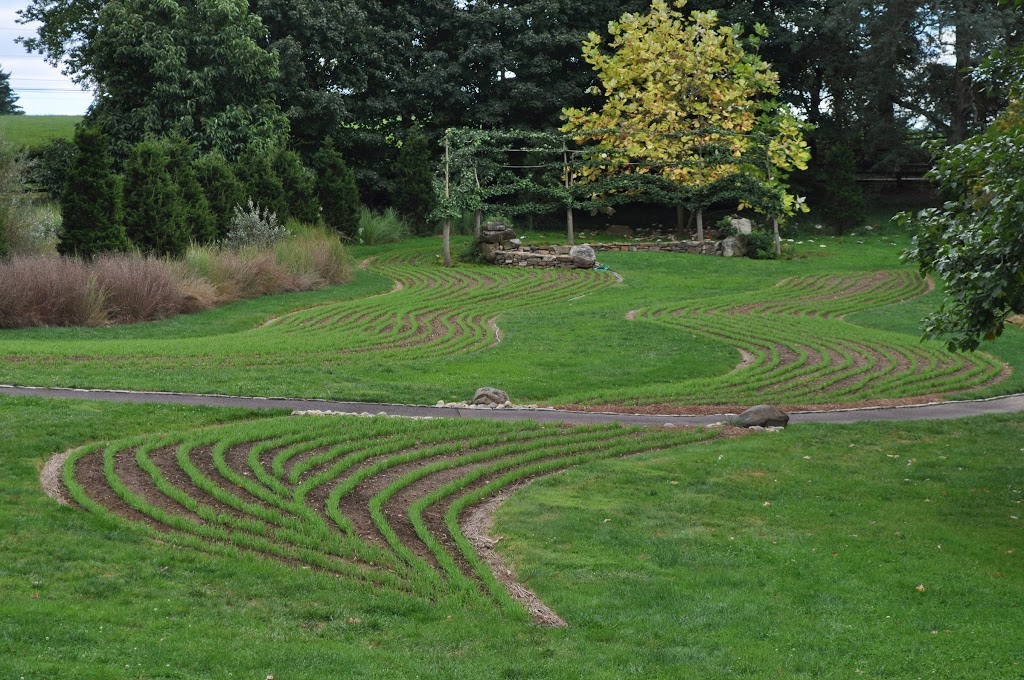
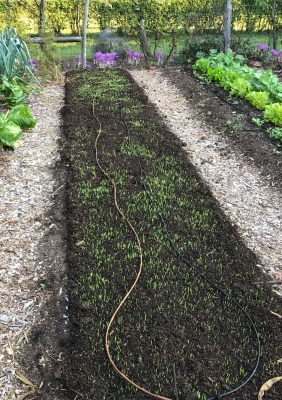
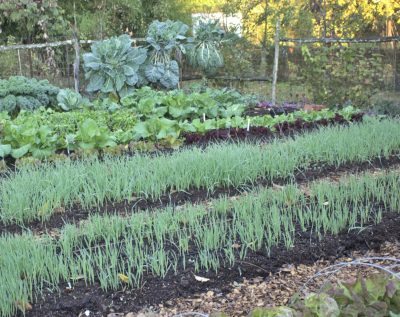
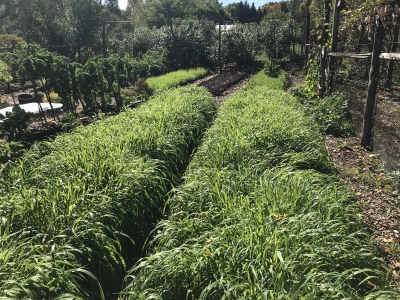 The most obvious benefit of a cover crop is the protection it affords the soil from wind and rain, either of which can carry away the most fertile surface layer. Also protection from temperature extremes. Another benefit is that cover crops can suppress weeds. Less obvious is cover crop plants’ ability to grab onto and bring back up to the surface layers nutrients that rain might otherwise wash beyond roots into the groundwater.
The most obvious benefit of a cover crop is the protection it affords the soil from wind and rain, either of which can carry away the most fertile surface layer. Also protection from temperature extremes. Another benefit is that cover crops can suppress weeds. Less obvious is cover crop plants’ ability to grab onto and bring back up to the surface layers nutrients that rain might otherwise wash beyond roots into the groundwater.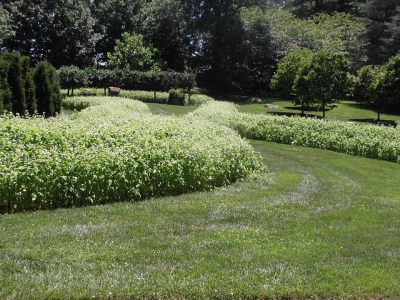
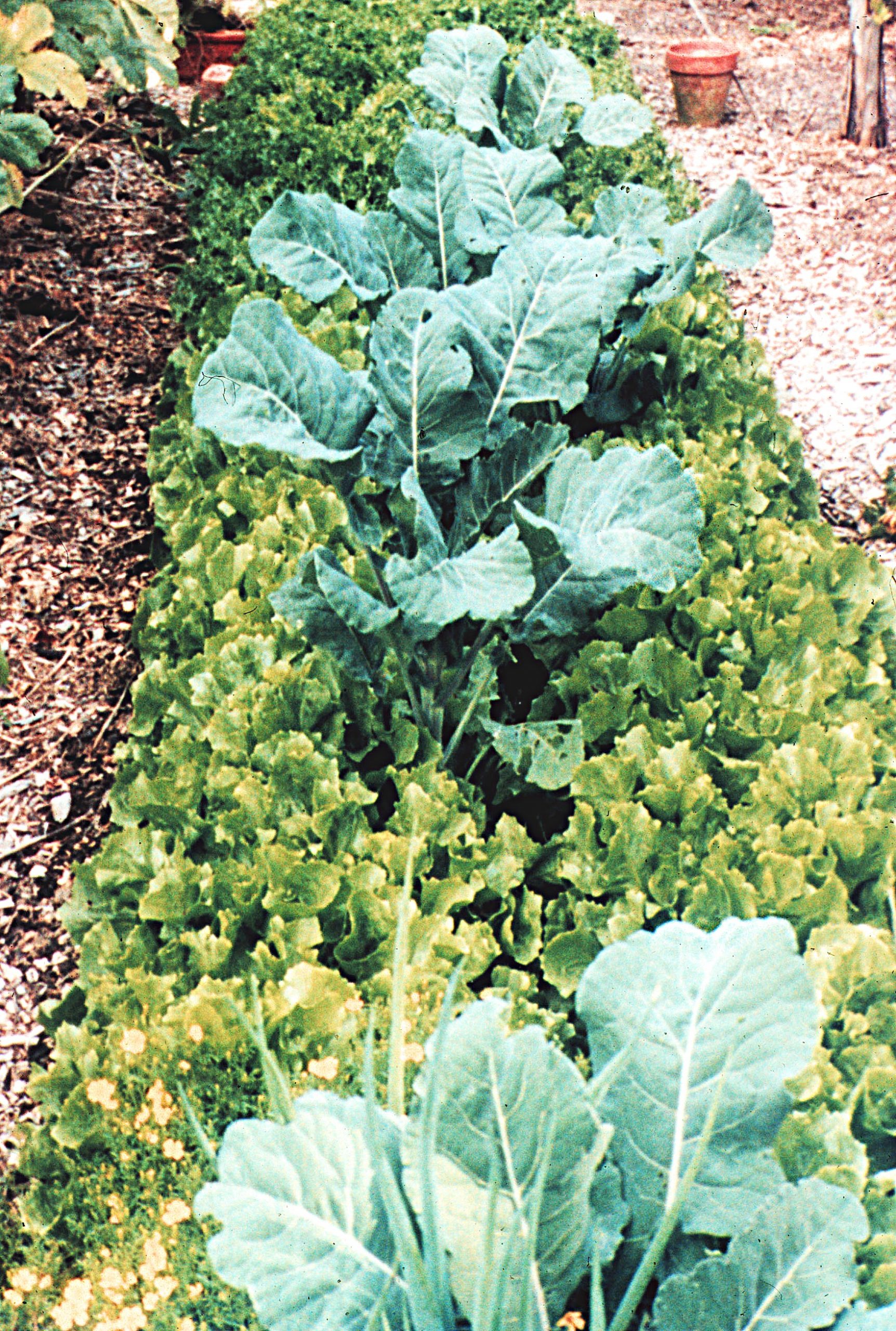
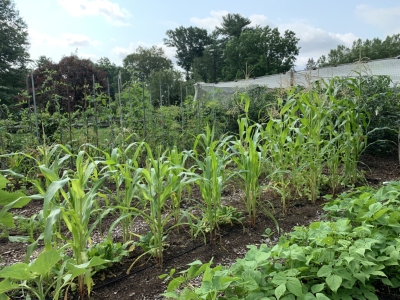 In another bed, tomatoes are doing fine, but are not as vigorous as they should be as compared with another bed of tomatoes in that garden.
In another bed, tomatoes are doing fine, but are not as vigorous as they should be as compared with another bed of tomatoes in that garden.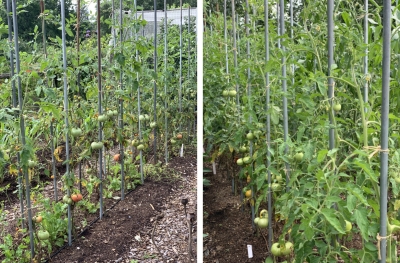 My notes indicate that both beds received their annual blanket of compost, just like all the other beds. Last fall, when the compost was applied, I also sowed cover crops in those beds. Rather than my usual oats cover crop, which winter-kills so integrates well with my no-till system, I sowed crimson clover along with the oats. Why crimson clover? Because it’s pretty when it blooms in spring.
My notes indicate that both beds received their annual blanket of compost, just like all the other beds. Last fall, when the compost was applied, I also sowed cover crops in those beds. Rather than my usual oats cover crop, which winter-kills so integrates well with my no-till system, I sowed crimson clover along with the oats. Why crimson clover? Because it’s pretty when it blooms in spring.